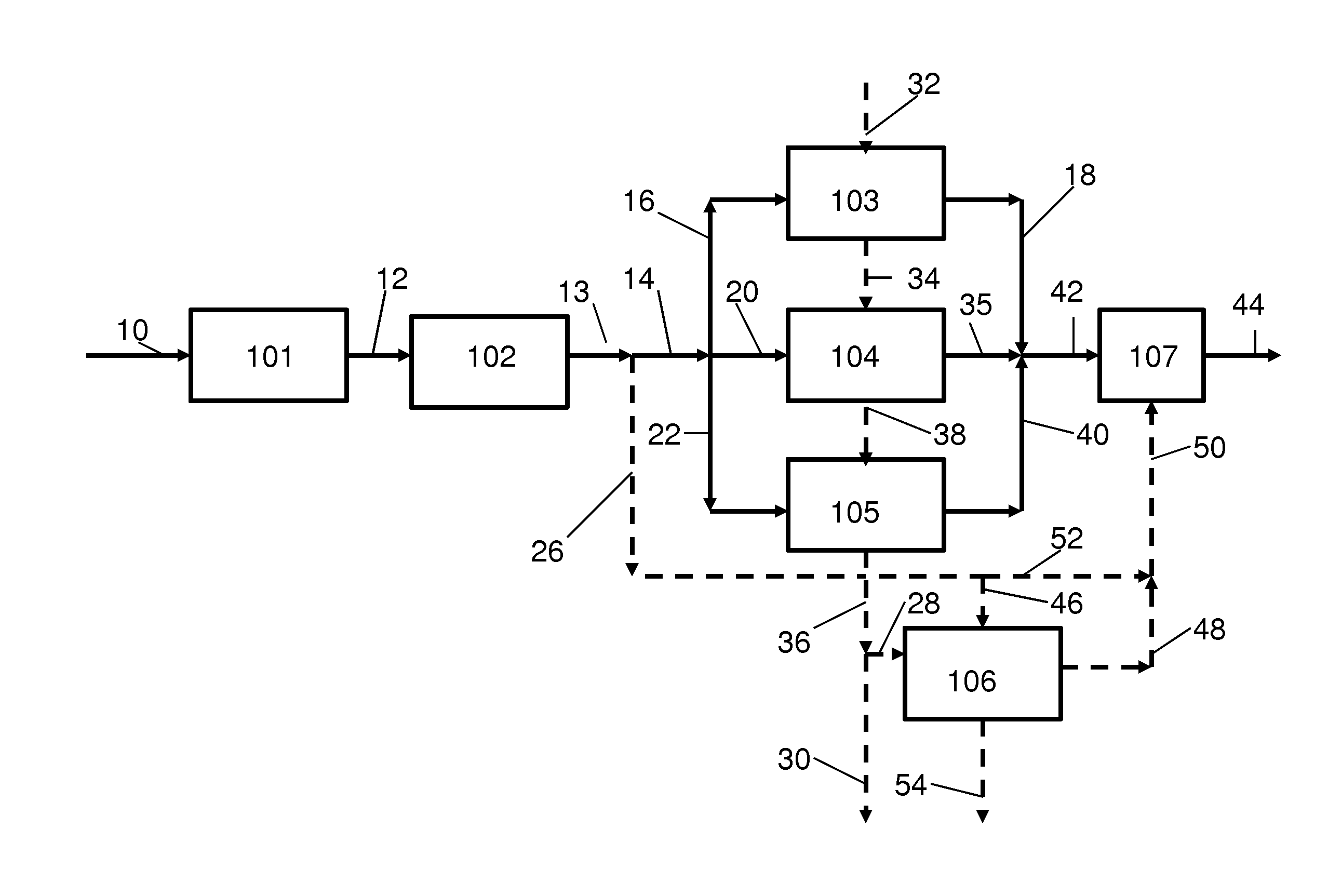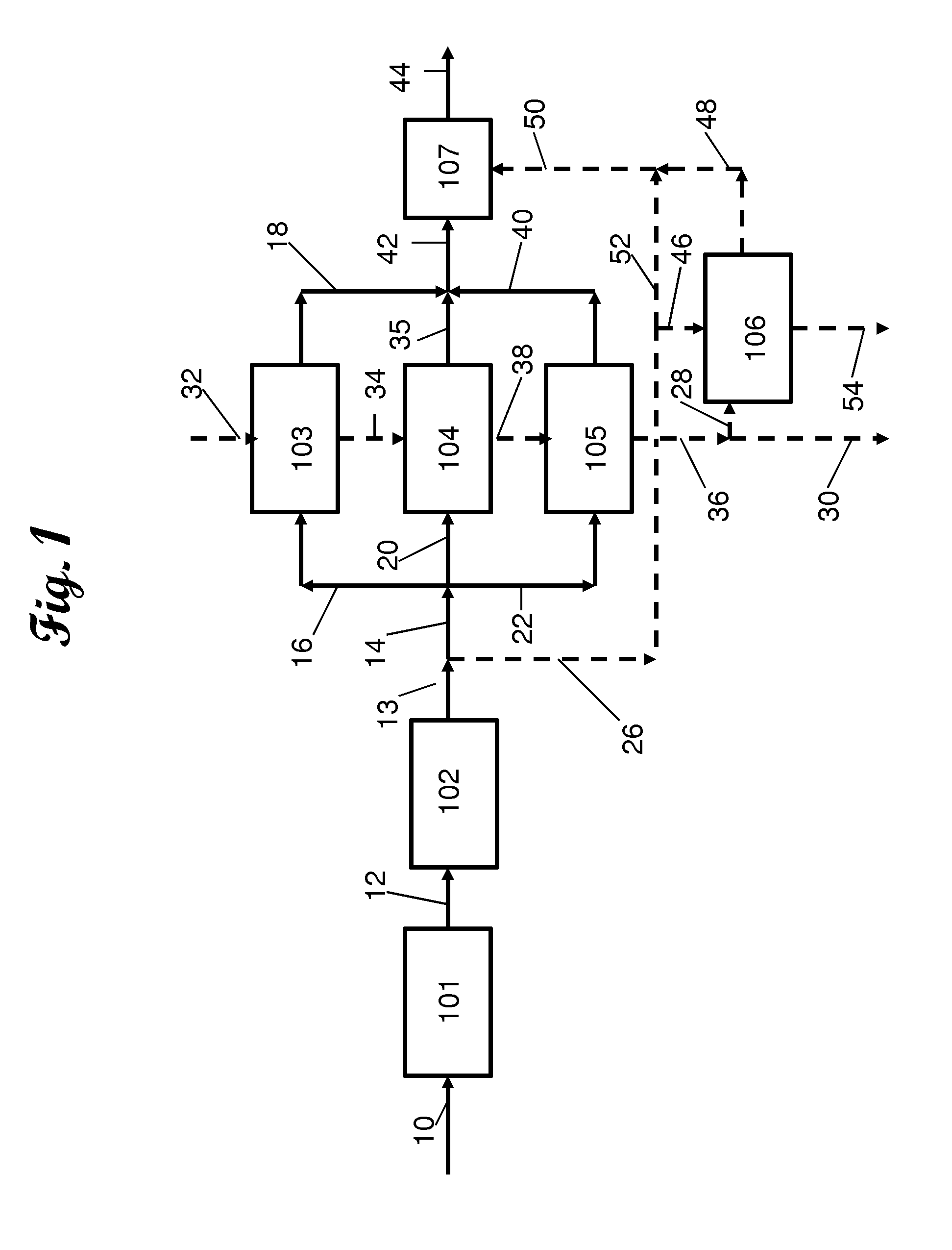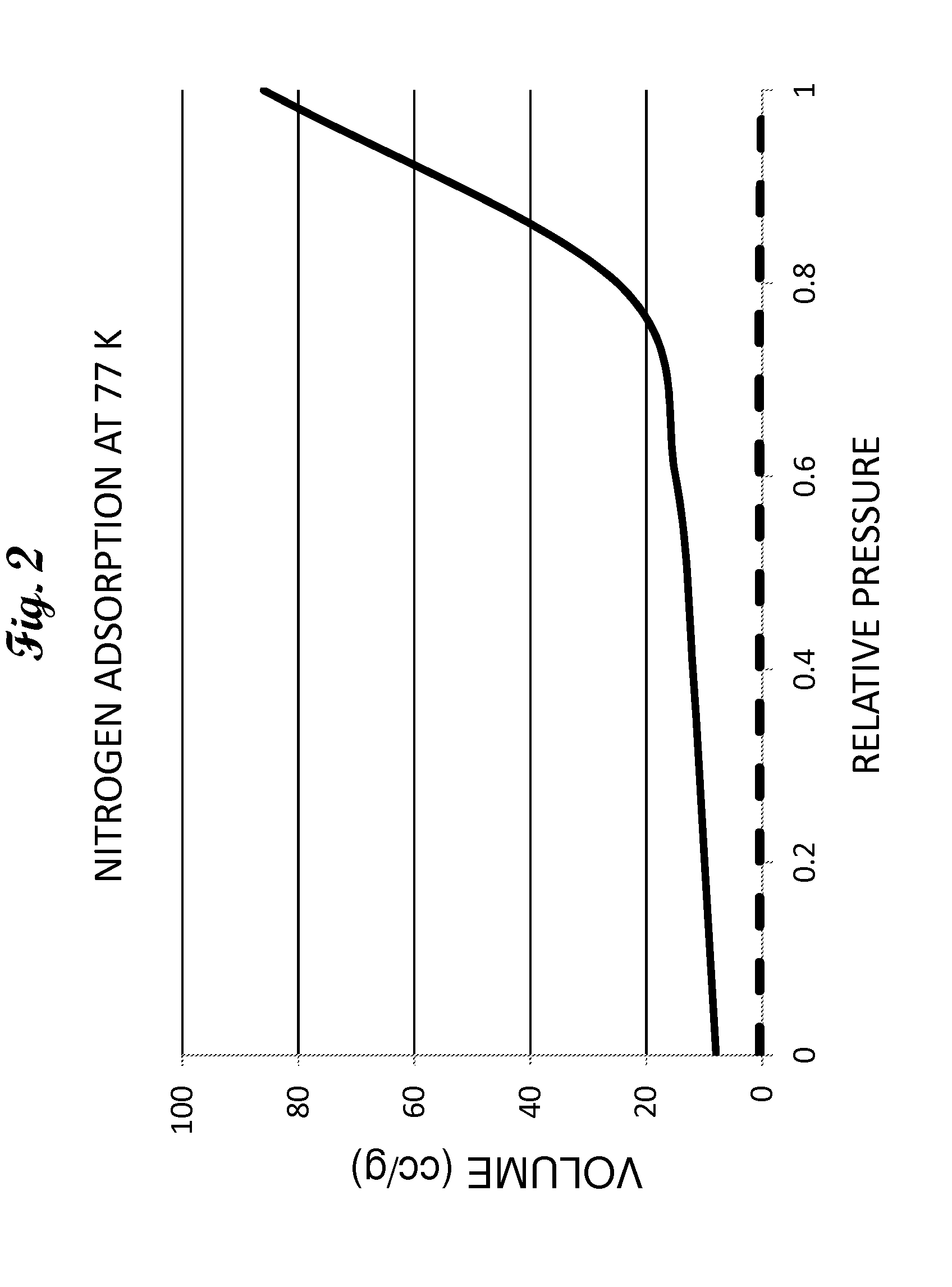Method for removing sulfur compounds from sour gas streams and hydrogen rich streams
a sulfur compound and sour gas technology, applied in the direction of hydrocarbon purification/separation, gaseous fuels, hydrogen separation using solid contact, etc., can solve the problems of sulfur oxides, corrosive, and high production cost of pure hydrogen, so as to reduce or eliminate capital and operating costs
- Summary
- Abstract
- Description
- Claims
- Application Information
AI Technical Summary
Benefits of technology
Problems solved by technology
Method used
Image
Examples
example 1
Absorption of Hydrogen Sulfide from Dry Hydrogen Gas
[0044]A series of absorption experiments were performed for the treatment of a dry hydrogen gas having a specific amount of hydrogen sulfide. The hydrogen gas standard had a certified content of hydrogen sulfide of 108 ppb (Available from Matheson Tri-Gas, Inc, Basking Ridge, N.J.) in 99.99 Hydrogen. The absorbent beds consisted of stainless steel tubes having an inside diameter of about 1 cm and a lengths of 14 cm, 22 cm and 28 cm. The 14 cm tube contained about 25 grams of the absorbent. The hydrogen gas was passed through the absorbent beds at gas flow rates ranged from 0.25 to 6 l / min. At gas flow rates less than 3 l / min, the concentration of hydrogen sulfide in the outlet stream was less than 3 ppb. When the gas rate was doubled to 6 l / min, the outlet gas contained about 24 ppb of hydrogen sulfide. Thus, for gas flow rates below 3 l / min, the hydrogen sulfide removal efficiency ranged from 98.1 to 99 percent. When the gas rate ...
example 2
Breakthrough Analysis
[0045]A stainless steel tube having an inside diameter of about 1 cm and a length of 14 cm was filled with about 25 grams of the absorbent. The absorbent was subjected to a total gas flow of 2.1 cubic meters of dry hydrogen gas having a hydrogen sulfide level of 108 ppb before breakthrough of the hydrogen sulfide was detected. Thus, the loading of hydrogen sulfide on the absorbent at breakthrough was 340 micrograms, corresponding to about 0.53 wt-% based on the mass of the absorbent.
example 3
Post Breakthrough Operation of Absorbent Bed
[0046]The experiment of Example 2 was continued at gas flow rates of 1.0 and 0.25 and the outlet concentration of the hydrogen sulfide was measured in the outlet stream. At gas rates of 1.0 and 0.25 l / min, the outlet hydrogen sulfide concentration was measured at about 2 ppb, corresponding to a hydrogen sulfide removal efficiency of about 98 percent, based on weight.
PUM
| Property | Measurement | Unit |
|---|---|---|
| Temperature | aaaaa | aaaaa |
| Temperature | aaaaa | aaaaa |
| Temperature | aaaaa | aaaaa |
Abstract
Description
Claims
Application Information
 Login to View More
Login to View More - R&D
- Intellectual Property
- Life Sciences
- Materials
- Tech Scout
- Unparalleled Data Quality
- Higher Quality Content
- 60% Fewer Hallucinations
Browse by: Latest US Patents, China's latest patents, Technical Efficacy Thesaurus, Application Domain, Technology Topic, Popular Technical Reports.
© 2025 PatSnap. All rights reserved.Legal|Privacy policy|Modern Slavery Act Transparency Statement|Sitemap|About US| Contact US: help@patsnap.com



